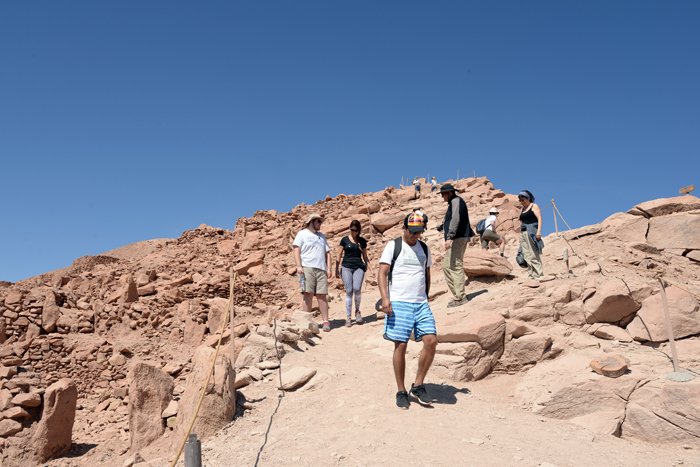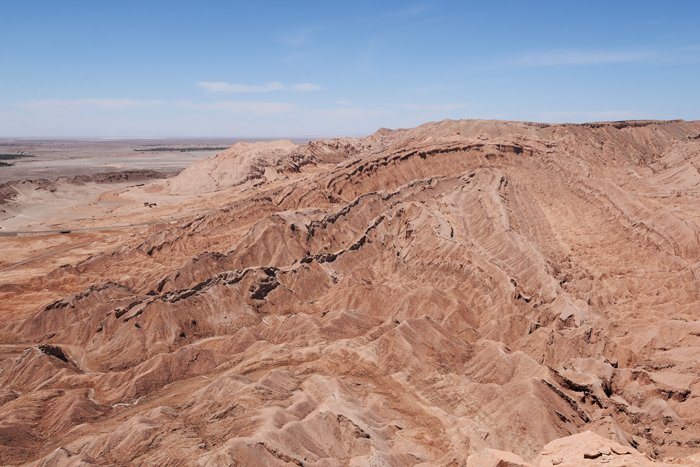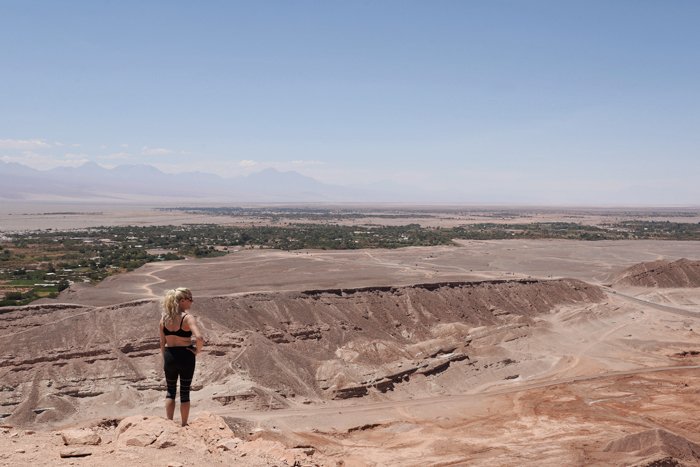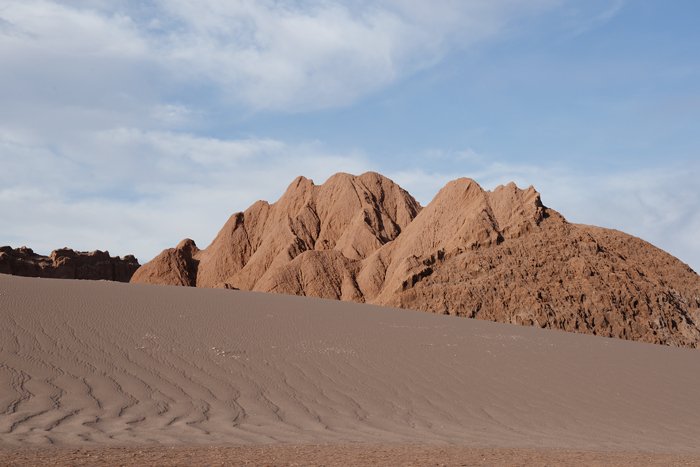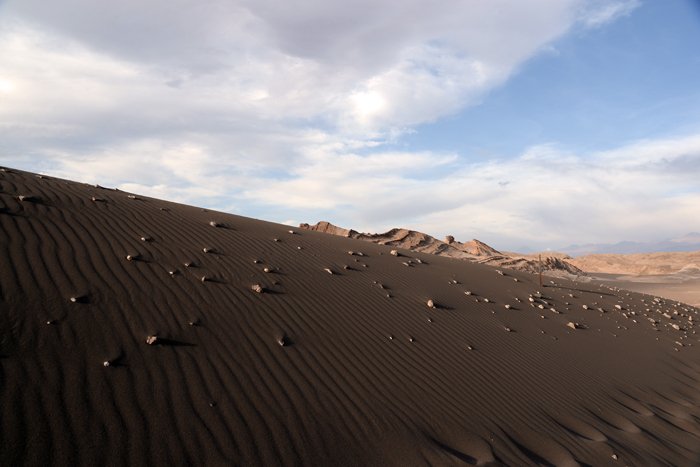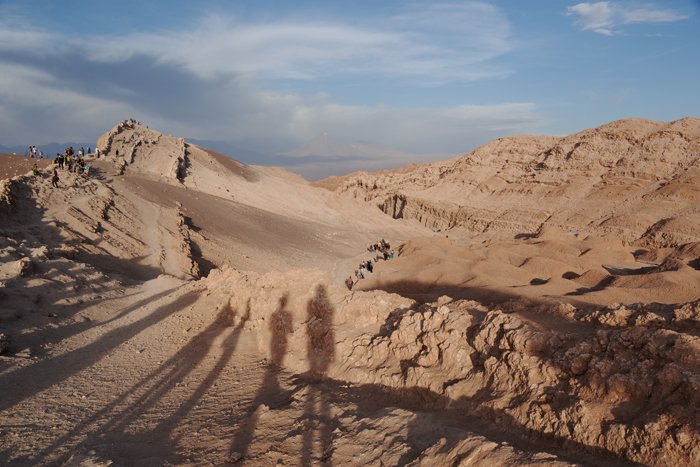
In January this year I spent allmost a week in the Atacama desert, northern Chile. I stayed in San Pedro de Atacama, a small adobe oasis in the heart of northern Chile's most spectacular scenery. It is dotted with volcanoes, steaming geysirs, the country’s largest salt flat, weird rockformations, sand dunes and archeological gems.
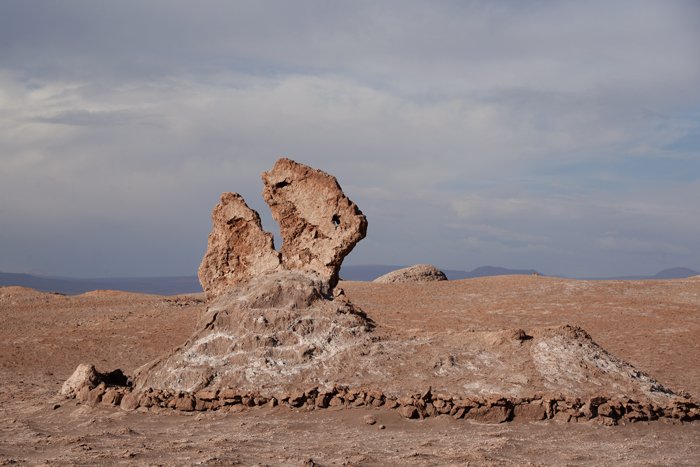
The Atacama desert is said to be the driest place on earth. It covers 1000 km. strip of land on Chiles Pacific coast. The temperatures are extreme. During the day it can reach 40 degrees Celciua, but during the night it can fall to 0 degrees. Despite the high temperatures during the day, the high peaks are topped with snow, which is possible because of the high altitude. There is so little light pollution in the desert, which makes Atacama the perfect place for stargazing. That must be the reason for placing the world's largest observatory not far from San Pedro. The night sky is amazing!
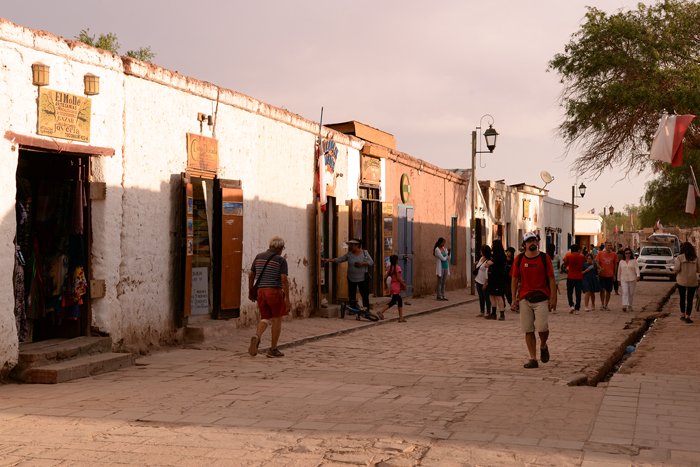
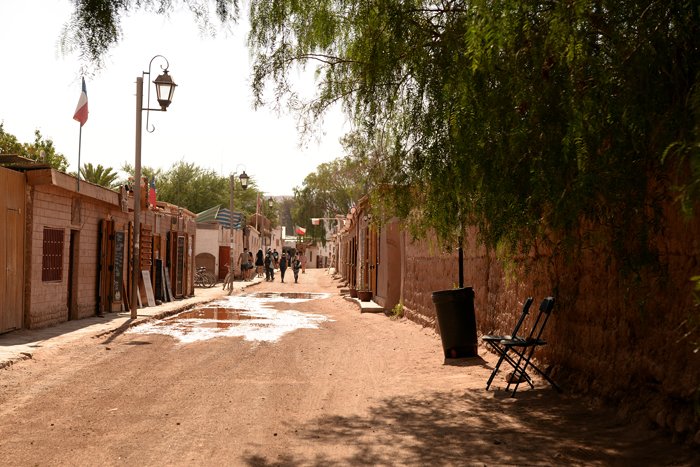
San Pedro de Atacama
At an altitude of 2.438 m. above sea level San Pedro is the best place to stay in order to be near the attractions. It's a dry and dusty place, but despite it's small size, it has a large amount of hotels, restaurants and tour operaters. There are limitid options when it comes to public transport. The best option is rental car. San Pedro was the birthplace of the Atacama people, the creators of the culture of San Pedro. They developed this area over 11.000 years ago. San Pedro was a pre-colombian pit stop on the trading route from the highland to the coast it has several archeological sites and a little archeological museum.
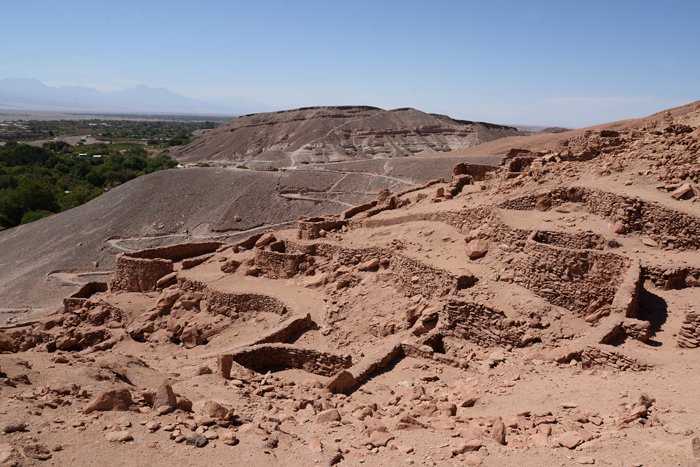
In order to adjust ourselves to higher altitude, we spent our second day around San Pedro, visiting Pukara de Quitor (Pukara means fortress) and Valle de la Luna. Because there's not much shade at the Pukara we made that an early morning visit.
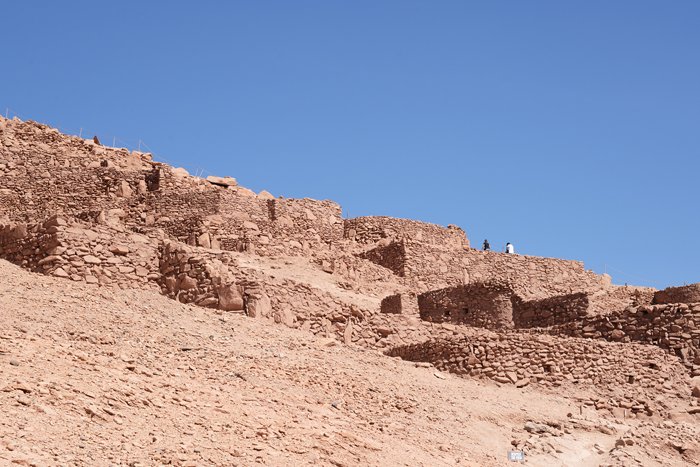
The fortress is only 3 km. away from San Pedro. Easy to reach on bicycle or even walking. This fortress is one of the region's most fascinating man-made attractions. At the entrance there is a line of signs which gives a brief introduction to the history. Pukara de Quitor was one of the last bastions against the Spanish in northern Chile and dates back over 700 years.

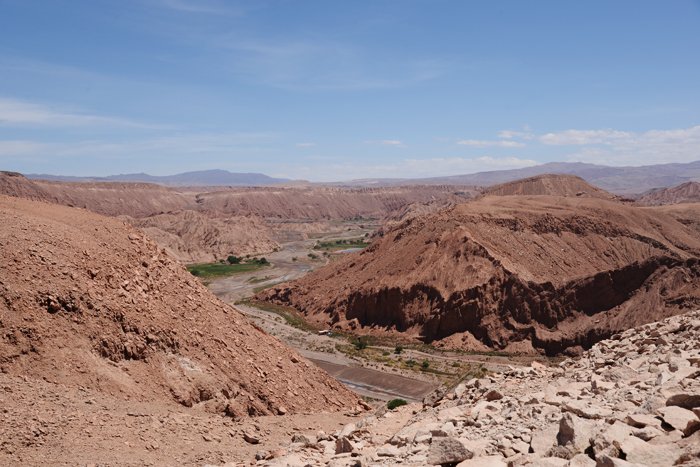
Rio San Pedro
There are two paths. One to the viewpoint and the other to the Pukara itself. At the Pukara we walked the path among the ruins. There were hundreds defensive enclosures built by using a terrace technique. The view of the whole oasis and the Rio San Pedro is impressive! This location of a fort was well chosen!
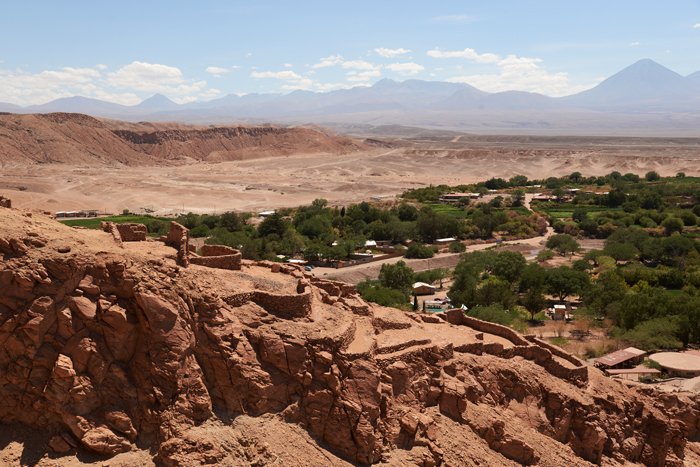
The Atacama people were ranchers, agricultors and warriors who defended their lands against the Spanish invader. It was in the Pukara de Quitor they organized their resistance to the European invader. The Spanish found a people that despite they suffered defeats, mananged to resist for more than 20 years. In 1557 a peace agreement was established, which meant the surrender of the Atacama people. They couldn’t resist the strong impact of the Spanish imposed on them.
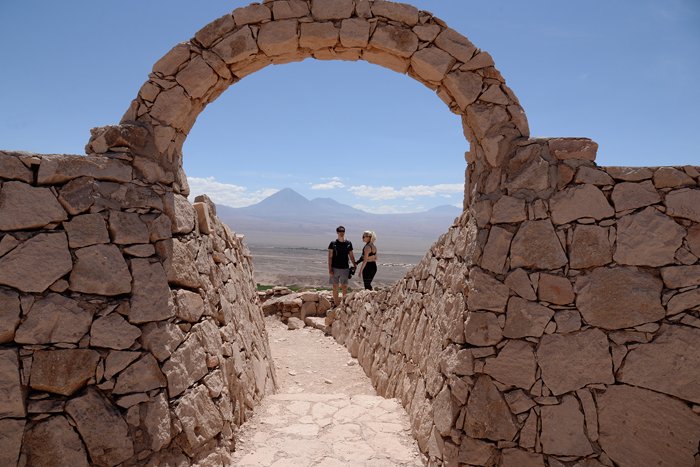
Death Valley
Death Valley
At the top of the viewpoint you will find the most iconic structure – a pre-Incan styled stone arc. Panoramic view of San Pedro, Death Valley and the surrounding desert. On top there is a cross – a monument and tribute to the bravery of the Atacamenian people who faced savagery of the Spanish conquistadors.
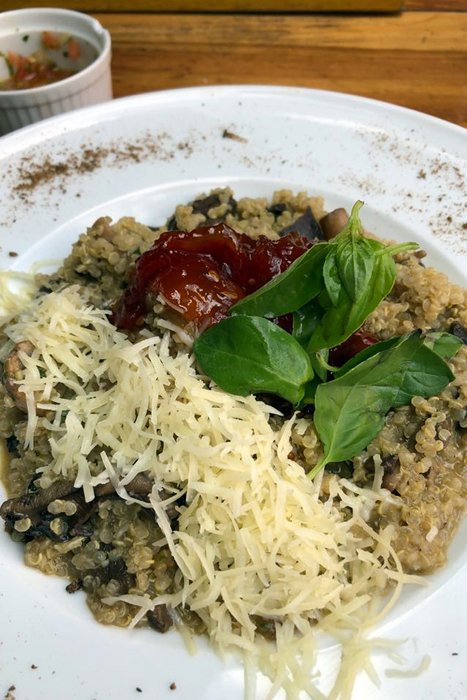
My quinoa lunch
By noon the heat was quite unbearable. To get away from the heat for a few hours we had lunch in one of the restaurants in San Pedro, before we were off to Valle de la Luna (Moon Valley). This otherworldly landscape is located only a short drive from San Pedro. Watching the sunset from here is probably the most popular tourist attraction!

The name Moon Valley derives form it's lunar like landforms. Whether you walk, bicycle or drive throgh the area, you have the feeling of being on the moon! The area is made of salt rocks eroded by wind and quick temperature changes. This landscape is covered with some of the most weird rockformations, canyons and sand dunes designed by this erosion through time.
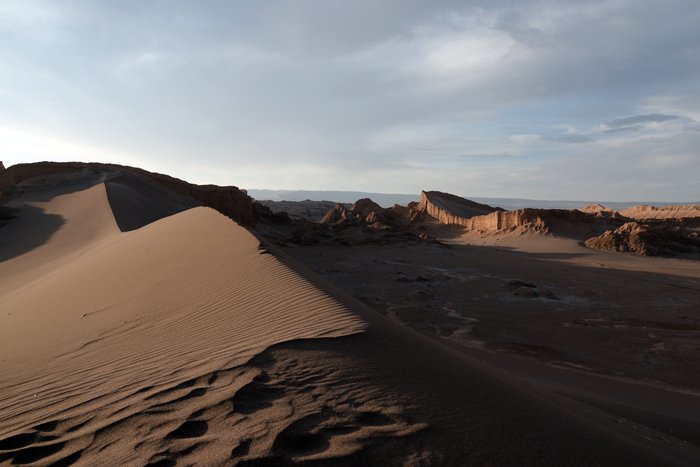
We drove through the area and made stops on the way to walk around into narrow gorges and climbing to the top of some of the rocks. As long as you keep safe, you are free to climb over dunes and rocks as much as you like. The last thing we did was to stop at the sunset point. After a climb to the top of the rock we sat down to watch the sun set and see the colors change. The view is amazing. You can see the volcanoes in the background. To see the moon just before the sun disapeared behind the horizon was a great way to end our day in Valle de la Luna.
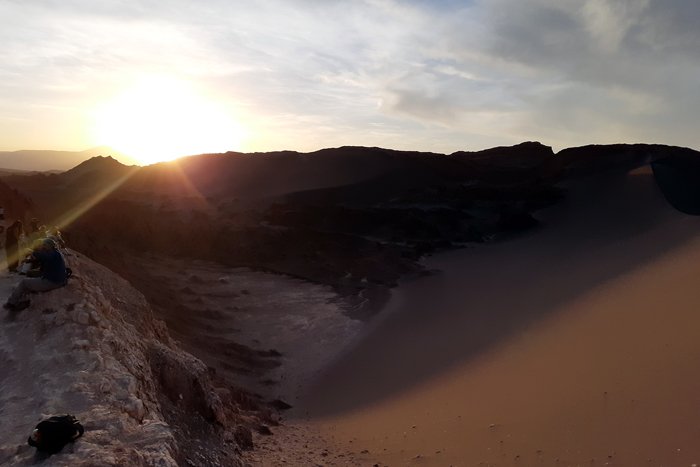
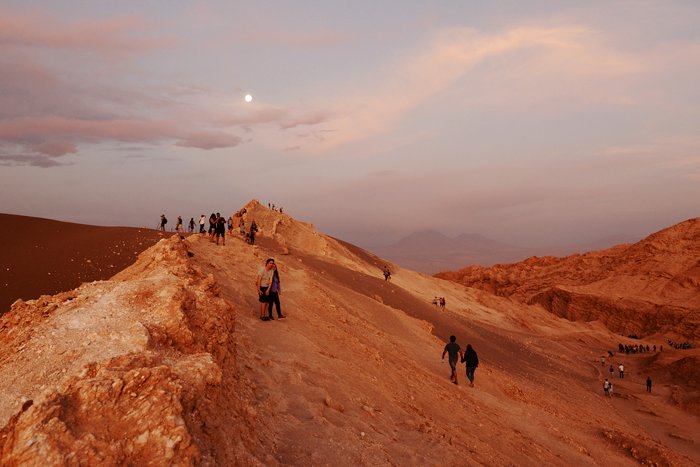
Please do follow if you want to keep up with my next travel story. Any upvotes or resteems are hugely appreciated!
Latest travel stories, check out :
Tanzania – to the top of Mt. Kilimanjaro (5.895m) with my sons
U.J
Kristiansand, Norway
All the photoes are mine, Ulla Jensen (flickr, Instagram and facebook)
[//]:# (!steemitworldmap -22.901096 lat -68.197497 long Chile - Higlights of the Atacama desert d3scr)Latest content: Travel, Art, Food, Article, Poetry


